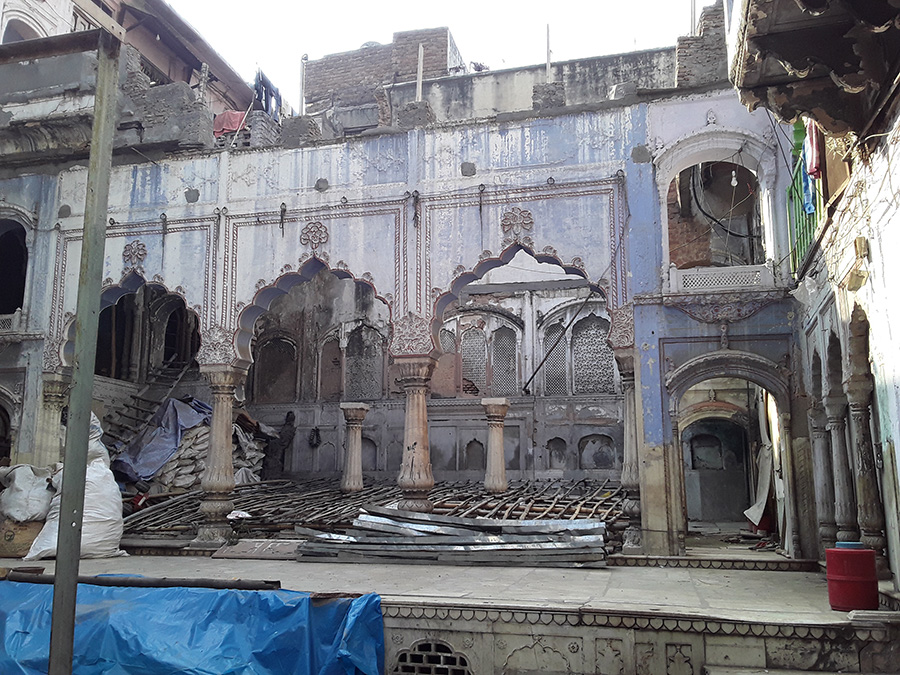by Bubba Sugarman
Our second morning in Delhi began with a 7:30 breakfast of scrambled eggs and Indian breads and colorful sauces. Our sleepy eyes took in the sunrise as the dim ball of light rose through the smoggy haze. Our hungry bellies consumed coffee tea and banana bread until we couldn’t eat anymore.
We walked to the Delhi Metro once more and traveled to the Jain temple we had visited before. We gathered with our guides outside the temple and listened to a lecture about the history of Old Delhi. We learned about the moguls and their contribution to the city’s as well as British rule and its impacts on development. As we listened, the traffic whirred and honked behind us, battered orange busses road past carts pulled by brahmin bulls, horns decorated in bright colors. After our history lesson, we found our rickshaw drivers from the previous day, and after exchanging pleasantries, we loaded up and were swept away in the flow of traffic. Our diver taught us Hindi in broken English throughout our trip, telling us the Hindi names for different things and places and teaching us colorful insults to hurl at his friends and fellow drivers.
We disembarked from our rickshaws in an alley and made our way onto the main street. We walked up and down, looking at and learning about the historic buildings and markets. Our guide informed us that the markets in Old Delhi had been designed by the daughter of the King. She separated the area into multiple market regions, each specializing in their own goods. Some markets sold cloth and textless while another focused on electronics and speakers.
We took our rickshaws deeper into the market and after climbing through a small entryway ordained with a hand-carved stone facade into an open space filled with rubble and marble pillars. We learned that it had once been an opulent mansion owned by the treasurer but had fallen to ruin. The building had once featured a beautiful courtyard with a central fountain surrounded by elegant marble columns. Remnants of beautifully hand-carved stone lay scattered around the site. What once stood as a prominent symbol of stature was now a collection of broken beams and scattered trash.
We soon ventured down another muddy alley and climbing four flights of dimly lit stairs, emerged onto a white rooftop. Bathed in the Noonday sun, we could see miles of flat-topped buildings stretching out in each direction. The sea of square brick buildings was only interrupted by the red spires of the Jain temple, and the golden and white limestone domes of the gurdwara and mosque. In the center third of the rooftop, a small rectangular concrete structure stood. Its front wall had been replaced with steel mesh doors, and a gentle fluttering and cooing emanated from within. A man in white robes, his wrist adorned with glittering gold and blue watch and cufflinks of marble-sized sparkling blue gems welcomed us to the rooftop. Our guide introduced him as the building’s owner and proceeded to tell us that he was a famously successful racing pigeon trainer. He proudly informed us that he was boxing legend Mike Tyson’s personal pigeon racing instructor. He opened the steel doors of his pigeon cage and showed us his personal collection of birds fawning over them like they were his children.
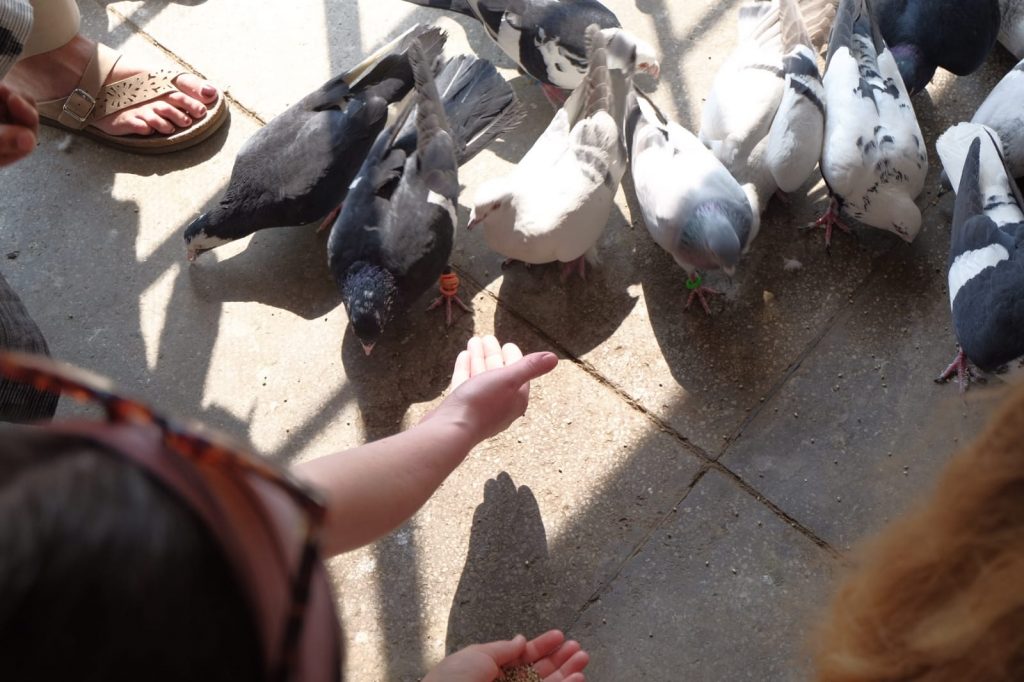
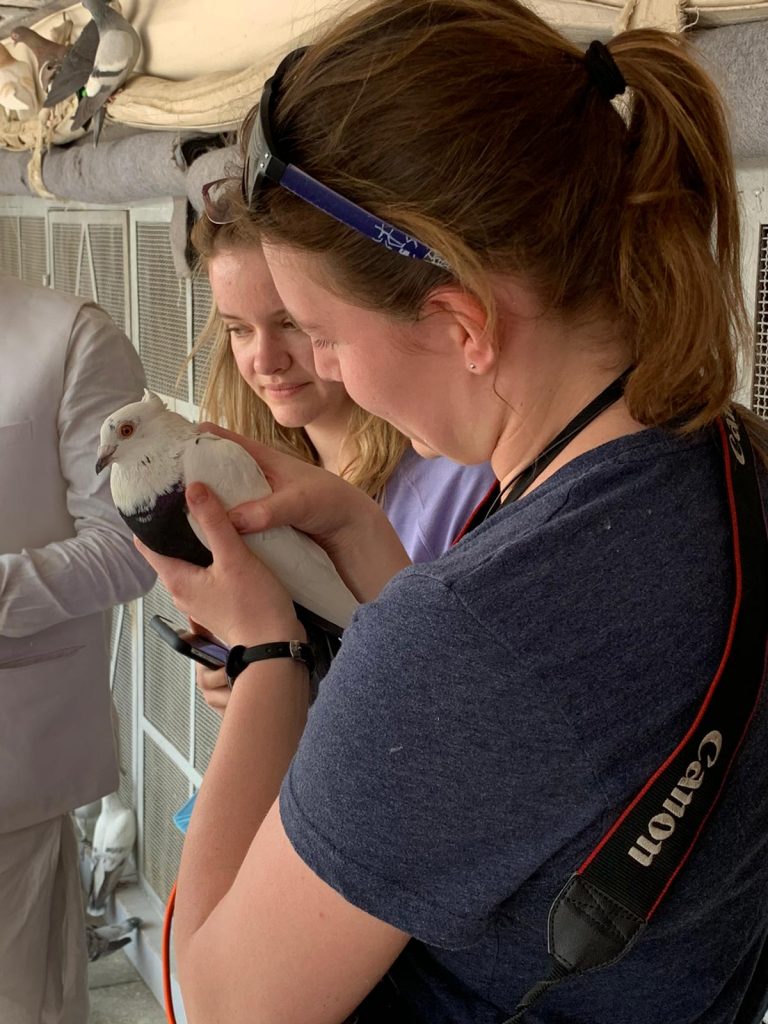
We walked through the town until we came to a small street lined with a row of ornately decorated buildings. Our guide explained that this little street was inhabited by Jains, who had lived in the homes for many generations. These affluent individuals were revered as leaders of the community. Two of the homeowners welcomed us, one a jeweler and the other an antique collector. They had turned part of their homes into small shops where they sold their wares. The antique collector had a beautiful office adorned with treasures he had brought back from his travels around the world. The jeweler explained that he sold many of his pieces to President Obama. He welcomed us into his shop and showed us a beautiful collection of necklaces, earrings, and rings.
Leaving the Jain street, we made our way to lunch and feasted on some of the spiciest Indian food we had had yet. With our mouths on fire and our faces beet red, we ventured to a local clothing shop and learned about traditional Indian dress. We purchased some garments and tried on a wedding Shari before heading back into the traffic and finding our rickshaws.
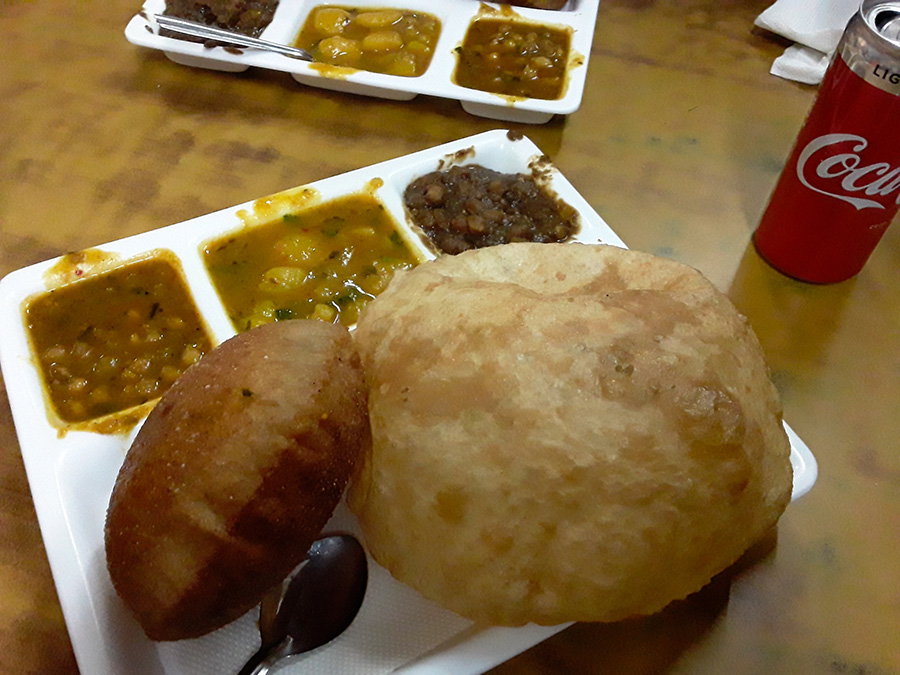
They pedaled us through the streets to Old Delhi’s spice market. The bustling streets were filled with vendors carrying large sacks of spices and hand carts carrying massive loads. The vibrant yellows and reds of turmeric and peppers lined the streets piled high in white canvas bags. White sacks of various dried herbs and spices lined the streets and were piled high in the backs of shops. As we made our way through the spice market, the aroma of the spice was overpowering, stinging our noses and making our eyes water.
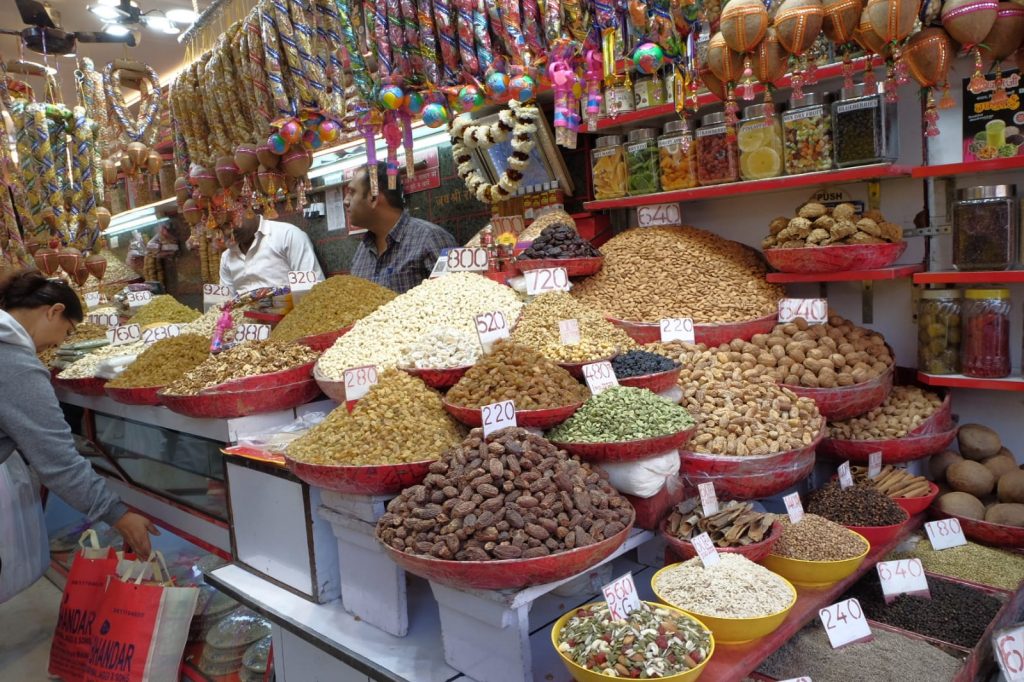
We found ourselves in a local shop, walls lined with small white bags of teas and spices packaged for individual sale. After a short pitch from the shop owner, we set about curating a selection to send home to loved ones. With our backpacks full, we piled back into our rickshaws and rode past monkeys, cows, and the usual traffic to the Delhi metro.
We rode the metro to Khan Market, a more upscale shopping area geared a little more towards tourists. An extended shopping excursion emptied our pockets and filled our bags with a wide assortment of trinkets and clothes for our families and the duration of our trip. As the sun began to set, we rounded up our troops and loaded up in tuk-tuks for the ride home. As we whizzed through traffic, busses and bikes whirred by, inches from our open doors. The ride flew by under the little tires of our three-wheel vehicle as we made our way toward the hotel.
We ate a lovely dinner on the rooftop of our hotel. Our heads started to nod as we ate our dessert of rice pudding, so we trundled off to bed. We fumbled with our electrical adapters, plugged our phones in, and set our alarms for an early departure. The next morning we were taking an early bus to Agra to see the Taj Mahal.
